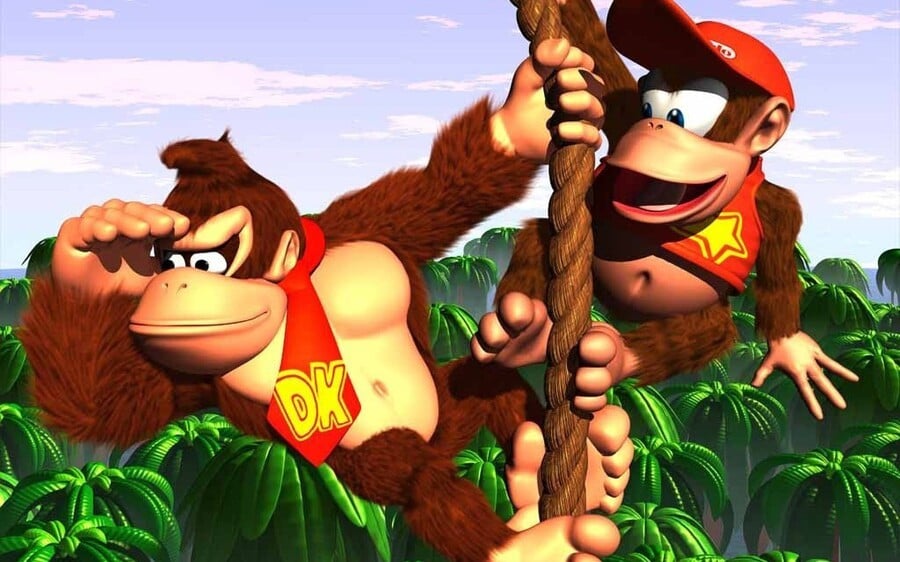
This month has seen the launch of Donkey Kong Country: Tropical Freeze, a superb platforming romp starring one of Nintendo's most iconic characters and coded by a western development team, Retro Studios. These days, the notion of an American company doing the heavy lifting on one of Nintendo's most esteemed franchises barely raises an eyebrow — after all, Retro has already done sterling work on the Metroid Prime trilogy and Donkey Kong Country Returns — and as a result it's all too easy to forget that it wasn't always this way. Back in the early '90s, Nintendo was only just beginning to open up to the idea of collaborating with western developers — Star Fox arguably starting the ball rolling — and the news that UK studio Rare would be creating the next installment in the Donkey Kong series caused shockwaves throughout the industry.
"I used to play cover versions, but it was mostly my own music. One day, two guys came in and asked who wrote this music, and I said that I did"
Subscribe to Nintendo Life on YouTube841k
Before we sprint headlong into the story behind Donkey Kong Country, it's worth getting a feel for the kind of company Rare was prior to the production of the game. Originally founded by brothers Chris and Tim Stamper in the sleepy English town of Ashby de la Zouch as Ashby Computers & Graphics Ltd., the company eventually evolved into Ultimate Play the Game, which would go to make a name for itself on the 8-bit microcomputers of the period, such as the ZX Spectrum and Commodore 64. In the mid-'80s the decision was made to move the company in a different direction, and Rare was born — a firm which would focus on creating content for Nintendo's new NES console. Rare was one of the first western developers to be granted a third-party licence with Nintendo — something which was no doubt helped by the fact that the Stampers had reverse-engineered the NES hardware in order to prove their talents and gain a better understanding of the machine.
Over the next few years Rare would produce a staggering number of NES and Game Boy games, a legacy which naturally required some expansion, as the siblings had traditionally done much of the work themselves — right down to the music. "I was working in a music shop in Leicester demonstrating keyboards," says David Wise, who served as Rare's sole in-house musician between the years of 1985 and 1994 and only recently parted company with the firm in 2009. "I used to play cover versions, but it was mostly my own music. One day, two guys came in and asked who wrote this music, and I said that I did. They turned to each other and asked if there was an office we could go to for a chat, and I assumed I'd made another sale. We went upstairs and they offered me a job. The two men were Chris and Tim." Wise would work on Rare's first NES title, Slalom, as well as countless other NES, SNES and Game Boy releases. However, arguably his most famous work is the captivating and amazingly diverse soundtrack for Donkey Kong Country.

Headhunting staff from local music stores was one approach that Rare used, but it was more common for developers to rise through the ranks. Brendan Gunn — who has lived in the English midlands his entire life — joined the company in 1988 with no industry experience whatsoever. "After school, I stayed on at the sixth form college and I was studying maths and physics — nothing to do with computing, there was no suitable or useful course to do with that back then," he says. "I got to the point of thinking do I go onto university, and told the careers advice people that I wanted to do games and was told to forget it, that it wasn't going to happen. One of the guys in the year above me at the college got a job at Rare, he put in a good word and they took me on as a trainee on a pitiful little wage. They threw an NES with a photocopied Japanese development manual cover in hand-written notes on what everything does at me and I was expected to go away and make it do stuff. That was my introduction to the games industry."
"They threw an NES with a photocopied Japanese development manual cover in hand-written notes on what everything does at me and I was expected to go away and make it do stuff"
Although Rare is famed as a creator of amazing games, it's often overlooked just how technically gifted the Stampers were. The aforementioned tinkering with the NES hardware is proof of that, as is the development of Killer Instinct, which ran on custom-built arcade hardware crafted within the walls of the company's HQ, located deep in the rolling English countryside. The Stampers didn't just know what it took to make a great game; they were intimately involved with the underlying tech that ran them.
"I've got a great little story about Chris," recalls Gunn. "This must have been on my first game, Captain Skyhawk. Everything was developed on these purpose-built and purpose-designed EPROM cartridges, which Chris himself had designed. I had this weird bug — I can't remember the specifics of it, but it would go wrong fairly predictably, but I couldn't figure out for the life of me what was going on. I'd written every line of code in this game and I couldn't understand how this could possibly happen. I had one of my irregular visits from Tim and Chris, who asked how things were going. I told them what was happening, and Chris just listen attentively and was very quiet, as was his usual way. And I thought he was going to say 'let us know how you get on with that', but instead he said 'just a second', licked the tip of his finger and placed it on the back of this cartridge, and it worked. He obviously knew there was some kind of design flaw in this custom development cartridge!"
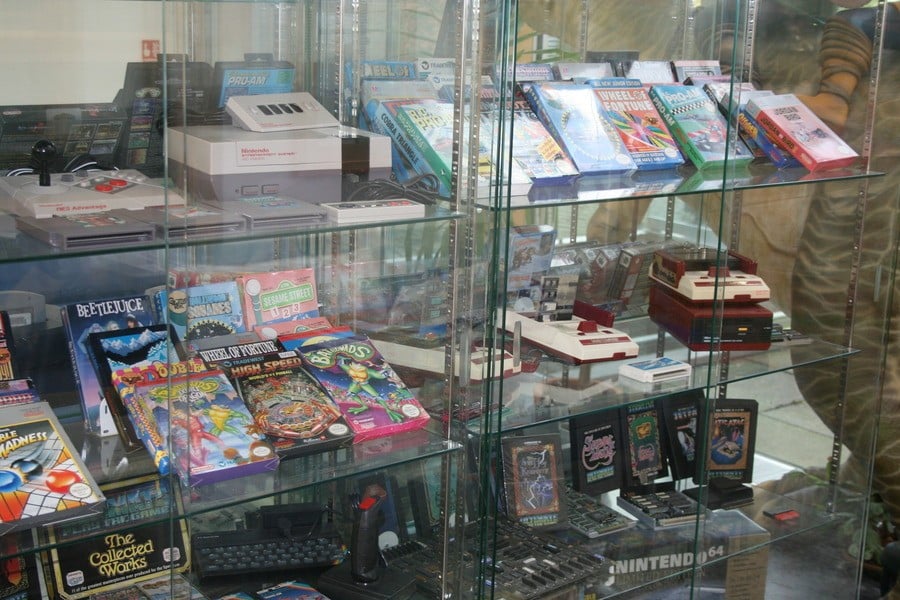
Rare's prolific work rate and impressive back catalogue of console titles can be attributed to the way in the which the Stampers ran the studio. Because several different teams would constantly be creating new games separately from one another, a sense of good-natured rivalry emerged which had positive ramifications on the overall quality of the end product. "The early days were always very competitive", admits Gunn with a smile. "Everyone would always be looking at each other's games and thinking 'that's a nice idea, I'll have a bit of that'. I remember back on the NES, some of the other guys had turned this friendly competition into a bit of an artform. The title pages started off as very simple, static affairs, with a logo and a name on it. Someone had decided that it was going to have little twinkly stars on it, and then the next guy thought 'I've got to have bigger twinkly stars', and it culminated in this flash that would start on one side of the screen, cross to just right-of-centre then explode in a big flash before continuing off right. That was very good for improving the quality of the games because we were always trying to outdo each other."
"Senior staff from Nintendo were visiting at the time that the boxing game was being worked on, and seeing that sealed the deal"
However, as the company grew the Stampers brought in additional measures to ensure a tight focus on individual projects, and the famous 'Rare secrecy' began to creep in. "As we started to become bigger teams, they segregated us," Gunn explains. "We used to work in different buildings which would be locked and you had to have the right key to get in. We didn't really mix very much — that was a deliberate effort to get everyone to focus on their own games."
By the '90s, Rare had developed titles for publishers such as Acclaim, Tradewest, EA, GameTek and LJN, as well as Nintendo itself. It was around this time that the Stampers — ever keen to remain on the cutting edge — invested heavily in what they believed was the future of gaming: Silicon Graphics. It was a definite gamble. "I think the machines were around £80,000 each," Wise recalls. "Incredibly expensive even then, so they really did go out on a limb to buy two of these machines." However, it paid off handsomely; Rare's first SGI project was a boxing title, and although it never saw release, it would prove instrumental in securing the next vital phase of the company's evolution: a partnership with Nintendo itself. "Senior staff from Nintendo were visiting at the time that the boxing game was being worked on, and seeing that sealed the deal," says Wise. "Rare showed them this working demo with rendered graphics which nowadays probably wouldn't look like much, but at the time it was like chalk and cheese when compared to other games." Encouraged by this new direction and already familiar with Rare's talent, the Japanese giant purchased a significant percent stake in the studio, making it a second-party developer.
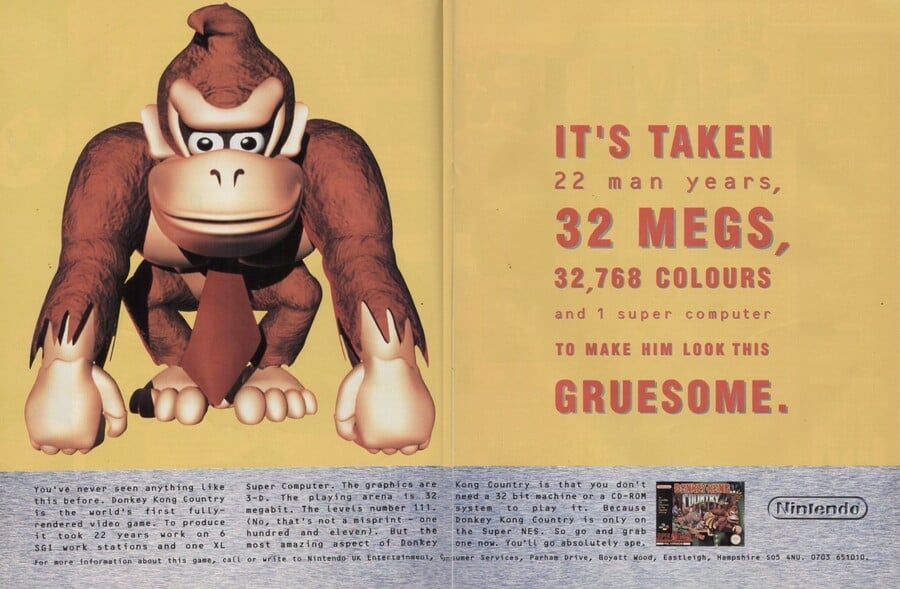
Blessed with access to Nintendo's catalogue of IP, the Stampers requested permission to create a new title featuring Donkey Kong. Gunn — who had worked on numerous Rare titles up to this point — had a special role in mind for himself on the team. "I insisted that my title was Technical Programmer," he says. "The engineering team was just two of us. Chris Sutherland was gameplay; he made it all fun to play, while I was all about 'how good can we make this look?' Donkey Kong was the first game I worked on where you would have what you could even call a team. It was about sixteen people in total."
"There was some wrangling over the look of Donkey Kong; we wanted to modernise the look and give him a different personality. Shigeru Miyamoto had some very strong ideas on what he should look like"
Getting to grips with the new SGI workstations was one of the most daunting aspects of the game's development. "The rendering of each 3D model would take ages," says Wise. "We'd work till 11PM at night, go home and in the morning the image might have finished rendering — it took that long for these huge machines to do it." This expensive equipment also required careful management. "We had this massive air conditioning unit just to cool these SGI machines," laughs Gunn. "We could all be suffering in the summer but as long as computer didn't overheat, it didn't matter." They might have generated lots of heat and been relatively slow to create Donkey Kong's unique look, but it was worth the effort. "I remember the first time I saw the rendered Donkey Kong model on-screen and it looked like a real, solid thing," Gunn says. "In the old days, stuff used to be hand-drawn on tracing paper and then someone would have to draw a grid over it and decode it by hand, so rendering it saved a bit of effort in that respect."
Rare may have been working on one of Nintendo's most treasured characters, but for the team in the UK, there was very little visible interference from Kyoto. "The team was largely sheltered from outside pressures by the Stampers," Gunn says. "We were aware that early on there was some wrangling over the look of Donkey Kong; we wanted to modernise the look and give him a different personality. Shigeru Miyamoto had some very strong ideas on what he should look like. Tim and Chris were very good at leaving us to it for long periods of time, and then they'd come back and there would be a flurry of feedback, but you never really knew if it was their ideas, or how much was coming from Nintendo."
The Stampers were also very good at applying the appropriate pressure to ensure the final product was as a good as possible — but that isn't to say that the Rare bosses were hard taskmasters. "Although we had Tim constantly coming back saying 'make it better, make it better', he always allowed us the freedom to have an idea and just go ahead and do it," Gunn continues. "And if he liked it, then great, but we had to make it better. If he didn't like it, we had to get rid of it. As a developer, you always felt like you had ownership of what you were doing."
"I was under the impression that it was probably going to be one of Nintendo's Japanese audio team who would eventually be doing the music for it"
While the game's visuals and gameplay were being worked on, there was the small matter of the soundtrack to contend with — something that Rare's resident composer assumed he wouldn't be required for. "I was under the impression that it was probably going to be one of Nintendo's Japanese audio team who would eventually be doing the music for it," explains Wise. "Tim said that he needed a demo from me, and in the end I did three different pieces — three demos — he liked all three of them and asked me to put them together, so that's what plays on the opening jungle level. Rare sent the demo off and someone at Nintendo must have liked it, as we were asked to get on with making the rest of the soundtrack. Most of the audio work was done by myself and Eveline Fischer. I also borrowed and adapted a track from Killer Instinct, thanks to Robin Beanland."
When listening to the amazing music that Wise created for Donkey Kong Country today, it's vital to remember that he achieved this aural brilliance on a cartridge-based system, and at a time when CD-ROM machines — complete with studio-quality audio — were bringing their tantalizing promise to the market. Nevertheless, he was far from jealous of the tech that some of his rivals were getting to use. "I was pretty much oblivious to the fact that CD-based consoles even existed," he admits. "I was just focused on getting as much as possible from the amazing sound chip in the SNES, which could play samples and had eight channels. After the NES, which was basically a musical doorbell, having eight channels to use was like Christmas! But it was tiny, with just 64k of memory. Some of what Brendan did for me was freeing up memory so we could swap it out. Everything was hand-coded as well — there was no midi or anything; it was all typed in, which was how we got a bit more memory as well."

For Wise, the development process was a little more isolated than the rest of the team. "All of my interaction was with Tim," he says. "The main guys worked in the main office and I worked in this converted cowshed, away from the main building. I wasn't really quite connected to the main team. Every so often Tim would come in with ideas — it depended on how critical things were. Sometimes it would be every day, sometimes he'd leave me for weeks on end to just get on with it."
"I think Mark Betteridge did some of the voices. He makes a very good monkey noise, I've heard"
Rare's original farmhouse HQ at Twycross is still owned by the Stampers but is no longer occupied by the developer — later in the '90s, the firm moved to a custom-build complex a short distance down the road. Those familiar with the English midlands will be aware that both buildings are a stone's throw away from an location which is possibly even more famous to the locals: Twycross Zoo. This complex houses the largest collection of monkeys and apes in the western world, and Rare's developers attempted to make use of this nearby resource when it came to creating Donkey Kong Country, observing the movements of the primates in order to imbue the in-game characters with realistic motion. However, this little excursion was ultimately fruitless and Kong's motion was instead roughly based on the gallop of a horse.
Wise also wanted to capture authentic sounds, but this didn't go according to plan either. "I went over with the microphones to try and record them," he says. "But unless it's feeding time, they were silent — you're not going to get a noise out of them. As soon as it's feeding time, the whole zoo erupts. Sadly, the noises didn't make their way into the game. It was a complete waste of time. I think Mark Betteridge did some of the voices. He makes a very good monkey noise, I've heard." For the uniformed, Betteridge is another Rare veteran who worked on titles like Cobra Triangle and Snake, Rattle 'n' Roll, and rose to the level of studio head before leaving to form his own computer software firm.
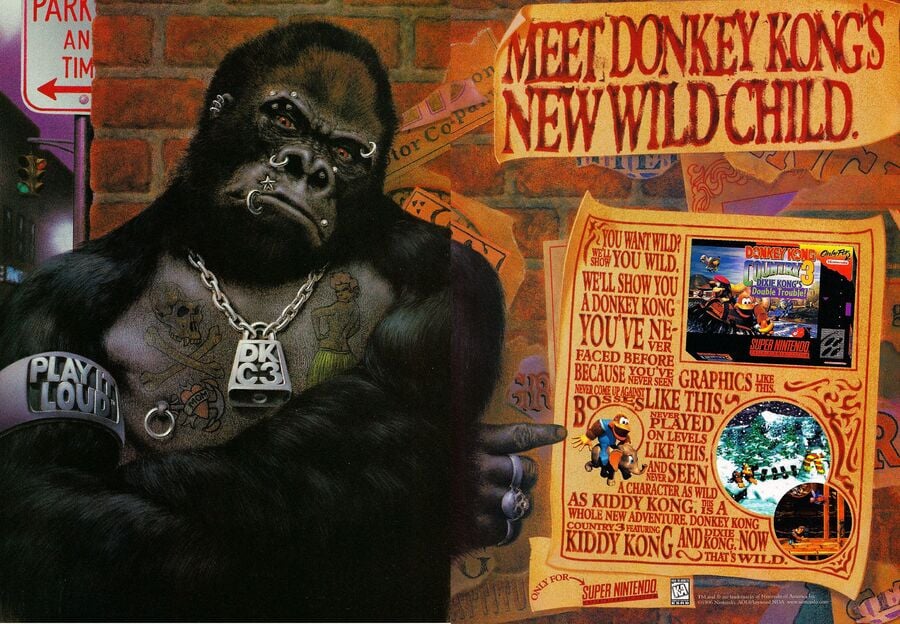
The team at Rare was creating a groundbreaking title, but even so, the development period was relatively quick — astonishingly so by modern standards. "It was about eighteen months in total from the initial concept through to the final product," explains Gunn. "There was obviously constant pressure; whatever we had done was never good enough and we'd have to go back and iterate and improve and make everything look better. It was always Tim Stamper. I was always trying to make things look as good as possible, with all these layers of parallax going on and the amount of graphics we have to cram in that video RAM. Tim was always 'that looks great, next, do some more'. Make it rain. Have the rain start in the background and then build through the layers until it rains on the foreground of the level. Have day to night cycles. Have snow appear. It was always a constant question of what we could do to take it to the next level."
"In our game, everything was rendered, even the numbers that showed the score; there wasn't a single thing that was hand-drawn"
The gaming landscape of the early '90s contributed additional stress the the game's gestation period, as Nintendo was involved in a battle with Sega for dominance of the market. "We had the Sega Mega Drive / Genesis which was in direct competition and we had to use this SGI tech to pip Sega to the post," Wise explains. "We knew we were onto something good. We knew we had to get it out for Thanksgiving."
Towards the end of the game's development, unwelcome news reached the ears of the staff at Rare regarding a rival SNES game which also used CGI visuals. "We started hearing about another game with a unicycle," Gunn says. "We heard it had pre-rendered graphics, and there was that worry that they'd be able to do something better than us." The game was of course Unirally — also known as Uniracers — which was developed by Scottish code house DMA Design. While it was a fabulous game in its own right, the staffers at Rare were relieved to find that it wasn't quite on the same technical level as their creation. "It turned out that only the cycle was CGI," continues Gunn. "In our game, everything was rendered, even the numbers that showed the score; there wasn't a single thing that was hand-drawn in that game. It was a big relief to find that DMA hadn't managed to outshine us in that respect."
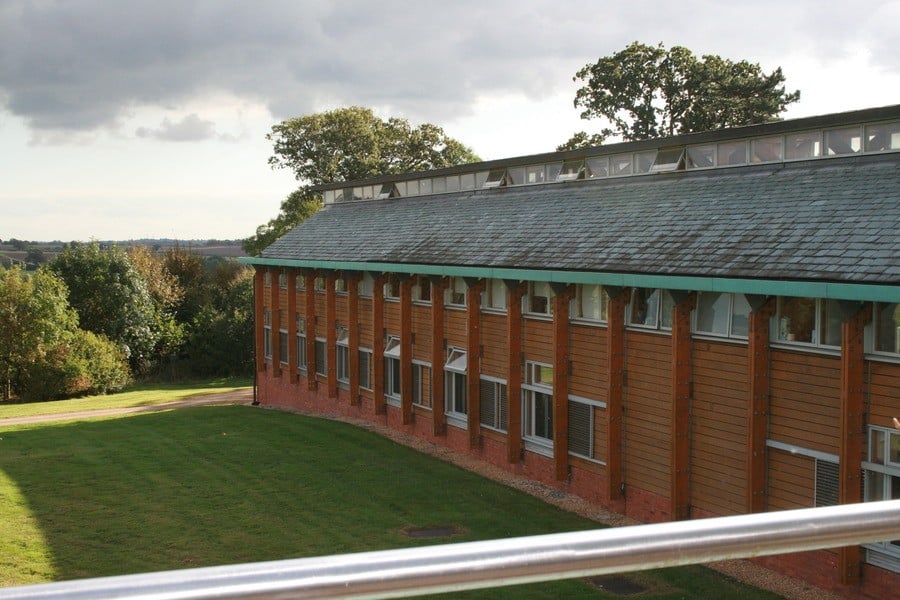
As with any project, there are elements which for whatever reason couldn't be included. However, it's perhaps surprising that with Donkey Kong Country, these are relatively minor. "I did all of the attract sequence and the map pages, and that's where my one big regret with that game is," Gunn says. "When you navigate around the map — which is all nicely drawn with paths leading everywhere — I just did this very lazy system of navigation where it would draw dots in a straight line between each location. It should have properly followed the paths. We just ran out of time. It's the one thing that I look back on and think that I didn't get it just how I wanted it to be." As Wise explains, there was simply a point in development when work had to stop, even though the team could have happily have kept working. "We were working right until the end, trying to get as much in as possible, right up to the point where they said 'you can't do any more now' — it was like having your toy taken off you!"
"We were working right until the end, trying to get as much in as possible, right up to the point where they said 'you can't do any more now' — it was like having your toy taken off you"
When Donkey Kong Country launched in time for Christmas 1994, it garnered critical acclaim and bumper sales, eventually shifting nine million units — an achievement which makes it the second best-selling SNES title of all time. What was perhaps most striking of all is that it effectively kept Nintendo in the game at a time when the 32-bit competition was hitting the market; both the Sega Saturn and Sony PlayStation launched in Japan at the same time. Despite the clear superiority of these new systems, the SNES was pushed to the forefront thanks to this gorgeous and thoroughly playable title — not that the team at Rare gave themselves much time to feel smug about it, of course.
"I think this is fairly typical of most industries, but as soon as your product is done, you move onto the next one and forget about it," says Gunn. "It's nice to see a few positive reviews but ultimately as people used to say at Rare, you're only as good as your next game. That was all we really would think about — how do we do better next time?" Wise's soundtrack was singled out for praise and continues to attract fans even today — which is why it was such a huge deal to hear that he was involved with Donkey Kong Country: Tropical Freeze. "It was such a big team effort, even when you're doing the audio," Wise says when asked how he feels about the acclaim for his music. "It was very nice to have all the accolades and the credit, but without people like Brendan chipping away in the background freeing up the memory, I never would have been able to do it."
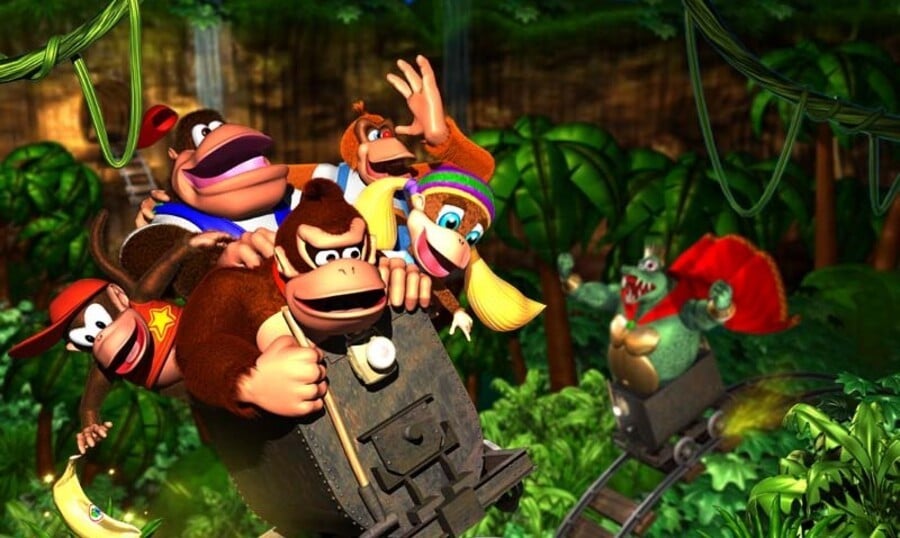
Given the success of the original game, it was inevitable that sequels would follow. Donkey Kong Country 2: Diddy Kong's Quest would serve as Gunn's next project, and his involvement with the series would keep him busy right up to the days of the N64. "After Donkey Kong Country, Tim came to me and asked what I wanted to do next. He said we've got an idea for something new, which turned out to be Project Dream — which eventually evolved into Banjo Kazooie. I didn't find out until much later that they had in mind a lead engineer role for me on that one. The other option was a Donkey Kong Country sequel. I guess I decided to play it safe, so I said I'd do the sequel. It was more of the same, but doing things better. I carried on with Donkey Kong Country 3 and eventually Donkey Kong 64."
However, Gunn's talents were called in on other projects, too. "I did some work on Killer Instinct 2 on the SNES. The guy in charge of that project left the company when it was 99 percent finished, and they asked me to finish it — a game I'd never even seen or played before — in six weeks. That was an interesting job. We got it finished — a little bit late, actually — but it was all for nothing. We were under contract with Nintendo and simply had to get it done, but they ultimately decided not to publish it."
"Whenever we had a dilemma on a game, we'd always look to Mario and Zelda for guidance for when we weren't sure how to approach things"
Rare's status as one of the most important second-party partners in Nintendo's history has led some to speculate that the UK studio was almost in competition with the Japanese veteran when it came to creating games. Donkey Kong Country could be seen as an attempt to better Super Mario World, while later Rare titles — such as Diddy Kong Racing and Banjo Kazooie — were viewed as Mario Kart 64 and Mario 64 beaters respectively. However, Gunn maintains that this simply wasn't the case, and that it was a feeling of inspiration rather than competition which permeated the company's Twycross base.
"We used to massively look up to anything they did," says Gunn, who no longer works in the games industry. "Whenever we had a dilemma on a game, we'd always look to Mario and Zelda for guidance for when we weren't sure how to approach things. I do feel that as much as we did some great work, it always felt like we were copying Nintendo. We would take what they did and push it in a slightly different direction and build on it technically and graphically. They were a massive influence on everything we did; I don't think there was ever any competition. If we could improve on a concept and make it better in some respects, then great. Ultimately, I'm sure that most people will argue that Nintendo produced a lot of the better games — GoldenEye aside, which arguably had a whole different set of influences — but we admired them, but we wanted to put our own spin on things." Even though Rare no longer works on Nintendo hardware, that unique 'spin' is arguably still being felt today through titles like Tropical Freeze.
Thanks to David Wise and Brendan Gunn for taking part in this feature.





Comments 50
Arcade - Killer Instinct and Arcade - Cruis'n USA (N64 version sucks).
Those impressed me miles more than Donkey Kong Country and it was around the same time. (Maybe because I got Donkey Kong Country quite shortly after it came out).
Wow, what a fantastic article, kudos Damien! It's still my favourite game in the whole series, nostalgia has a powerful grip on my head and this game truly was a joy to play and I still replay it once every other year. Oh and don't get me started on that brilliant soundtrack...
Nice read for some love for the Kongs!
Thank you for this great article, very interesting.
It's a shame that the month of Kong ends in a few days.
@Chubblings Don't worry, we have something really cool lined up for tomorrow...
Dear Nintendo start releasing old games in the series before major releases we should have got dkc 1 in December, dkc 2 in January, and dkc 3 in February building up to tropical freeze. That's how you sell games
Great article! I became a huge fan of the Donkey Kong Country games after I started playing through them with my brother, and it has my favorite video game soundtrack! Oh, and by the way, DKC2 is called Diddy's Kong Quest, not Diddy Kong's Quest.
Good read.
I just played through tropical freezes 3-1 world. You cannot play the third section of that world with its music and platforming in place amd not fall in love with gaming. I refuse to take any review lower than a 9 seriously after that.
nice insights thanks. love the pre-rendered 2D look personally, a HD game made like this could look like the DKC concept art.
@unrandomsam
Yeah, those games were impressive looking. But I invested more play hours into the DKC series than on any of those arcades. Because at the time me and a friend would play after school to see who could get best percentage in the first game. And we did the same after the second game came out. Good times.
Awesome article! I really like stuff like this and it seems that NintendoLife is the only site (in the Nintendo world at least) who does these anymore. Hope you'll do some more!
interesting!
Good read!
2014- The year of Donkey Kong
@GC-161 So did I but I would rather have played those Arcade games for as long (I know I felt like that at the time).
At the risk of sounding like a nostalgia partisan: those were the days.
Been replaying the original SNES trilogy in anticipation of Tropical Freeze (it won't get officially released in Brazil til March, bummer), and they are truly fantastic achievements. It's hard to pinpoint a favorite game of all time, but Donkey Kong Country 2: Diddy's Kong Quest most definitely would crack the top five in my list.
@ricklongo Sorry that you won't be getting Tropical Freeze until March, but it's well worth the wait. It's a truly amazing game, and I hope you enjoy it when it comes.
Loved the interview. Keep these up, NL.
@unrandomsam
Well, as soon as Street Fighter Alpha came out like a year later, I stopped playing KI. Mostly because more people were playing SFA than KI. And it was more fun playing against human players. But yeah, KI was very good.
But on home consoles, DKC was king for quite a few summers after it came out.
Beautiful story you have there. I've got a big interest in history and this one combines two into one.
I wonder how many will now start scouring around once news gets around that Killer Instinct at 99% was effectively finished, for the ROM to hand around like Star Fox 2 which was just as far along too.
Love these retro/history articles!
@Chubblings I got an imported copy coming to me in the mail as of right now, actually. I just hope it comes in time for the weekend.
I love all your articles about gaming history. All this info that none of us knew at the time is such a great revelation today.
While I did prefer a lot of their games to the Nintendo equivalents, it's true that they couldn't exist without Nintendo. I did prefer Super Mario World to DKC though mainly because the control & gameplay was a lot tighter.
Nintendo tended to make simpler games that were very strong in what they did offer while RARE went beyond in almost every department and still produced a quality product. People raved over Zelda OOT graphics but almost everything RARE produced in that era looked far better. Still when it came to the absolute tightest controls in gaming Nintendo couldn't be matched even by RARE.
Thank you for this! Rare has always been an enigmatic yet magical company in my eyes and you have helped me see the forest through the trees, so to speak. Banjo Kazooie won my heart instantly, and from then on I was hooked on their games. While I love the FPS genre, Goldeneye's learning curve turned me off a little, but Perfect Dark is a title I joyously return to on my new (used) Jungle Green N64, despite the controls perhaps being even harder. Along with DK64 waiting to be played as well, anytime I can find a used copy of a Rare game, I snatch it up. Just like acquiring my N64, a used SNES is also in my future JUST to play Rare games since Microsoft now owns their catalog and I'm not about to give them more of my money, that is unless they commission Rare to make a new game, that's inspired and as joyous as their legacy titles. Once again, thank you.
Nice, really nice article
This is one of the most interesting articles I've ever read on this site. Nice score N-Life staff! VERY nice score!
@erv I thought the exact same thing when I finished that level. An 82 Metacritic score for Tropical Freeze is ridiculous for a game that is so good that it actually chokes me up at times from its sheer brilliance. It's probably my favorite Wii U game so far - I'm enjoying it even more than Super Mario 3D World (which has a much higher average review score).
Great article, really enjoyed reading it.
Helluva good read, that.
Thank you for this article Nintendo-Life, that was thoroughly enjoyable to read and even quite thrilling to learn some new stuff about DKC's history!
Great post Nintendo Life. A very interesting read that hits my nostalgia buttons on the spot!
All my Sega Megadrive owning friends would pop over and marvel at the sheer brilliance of this game. Great times!
I have never played DKC 2 or 3, but from the gameplay I have watched on youtube, it looks as if Donkey Kong isn't even playable in the last 2 games. Why would that be?
Glad to see the Kongs getting their own month! Donkey Kong has always been the third wheel in the Nintendo trifecta! (Behind Mario and Link)
This is the type of thing I want to read when I'm on a gaming site. Not Wall street or political news. Good job.
Brilliant article @Damo
Rare were absolutely on fire for the best part if a decade. Donkey Kong Country, Goldeneye, Banjo Kazooie, Jet Force Gemini, Perfect Dark and Conker. I wish we could see that level of new IP from Nintendo again.
Whenever I read these history articles about Rare it fills me with warmth, which then immediately dissipates when I get to the end and remember where they are now.
Great article. Now I need to replay DKC 1 to see if that or Tropical Freeze is my favourite in the series.
Killer Instinct 2 SNES....finished but never released? Wrrrrrrrrryyyyy
Really great stuff, @Damo !!
I dream of the day "someone" dumps the fully working Killer Instinct 2 SNES ROM onlline...+_+
Always nice to read about the great dedication that's put into great games.
I really wish the old Rare guys would form a new company. Their output is sorely missed in the modern gaming world.
Also, Nintendo needs to get on re-releasing the DKC trilogy again.
@SparkOfSpirit They did I think. (Crytek).
Or at least most of them are part of it.
Took me days to finish but I finally did it and it was a great read. Sux that Gunn couldn't do what he wanted to with the map but I still think it was good the way it is. I LOLed at the galloping horse part. Man I loved it but then the last part just made me wish they could talk about Banjo-Kazooie instead, I loved that series.
Took me a while to read, but I read it, and that was a great article! I especially liked the parts about David Wise because his soundtracks are so good.
I'm so glad his Tropical Freeze soundtrack, in my opinion, lives up to the SNES games' soundtracks.
This is such a great read. A long one, but a great read regardless. It's amazing to hear how developers pulled off some the animations and attention to detail at such an early point in the video game business.
I LOVE these articles. Unfortunately, the DK Country series for the SNES are a series I've never played before, since they were both before me and when I was just a waddling baby.
I have played DK Country Returns on the Wii though, and that's great. So I at least have an idea of what makes the original series great.
Donkey Kong will always be my favorite video game franchise! I just wish Nintendo would make another 3D platforming Donkey Kong game.
It's always fun to read about Rare's good times.
Awesome read. Rare has some of the most interesting histories among video game developers. I really do miss those years of old. The double-team of Nintendo and Rare really made the N64's library a brilliant, exceptional one.
Thanks so much for this amazing article, Damien! In an era that pre-existed blogging and twitter, it seems like there are so many interesting development stories that no one ever hears about. Donkey Kong Country is one of my favorite games of all time, so it's so cool to hear about everything that happened behind closed doors.
Show Comments
Leave A Comment
Hold on there, you need to login to post a comment...